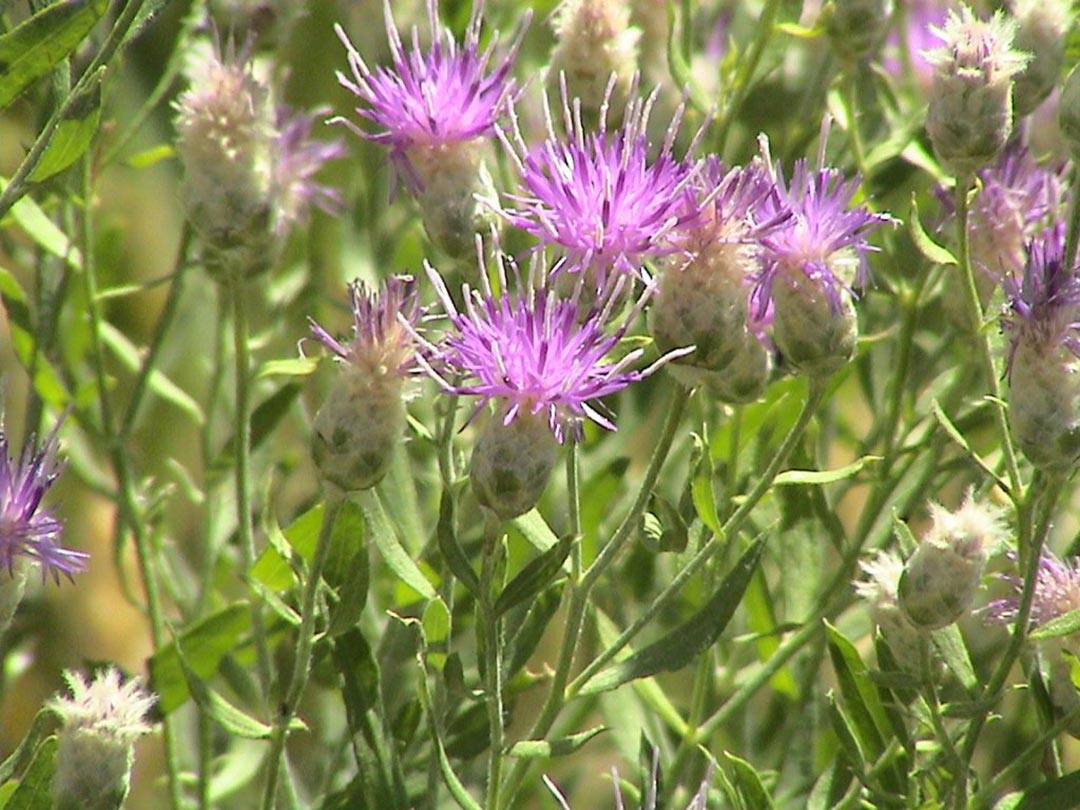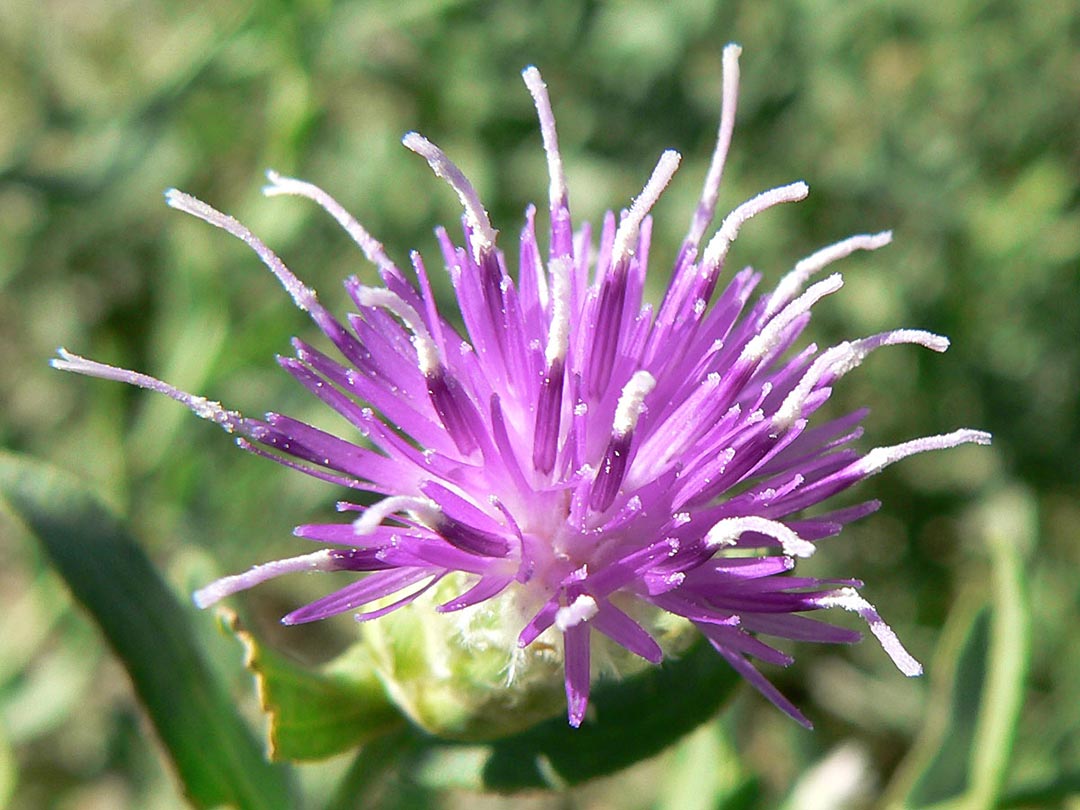Invasive Plant Details
Back to Full ListRussian Knapweed
Latin Name: Rhaponticum repens formerly Acroptilon repens
Identification
Flower: Pink to purple, thistle-like flower heads that bloom from late spring to summer.
Leaves: Lance-shaped, greyish-green, and slightly hairy with deeply lobed basal leaves.
Stems: Erect, stiff, and covered with fine hairs, growing up to 1 meter tall.
Growing Environment: Prefers dry, disturbed soils in pastures, roadsides, and waste areas.
Growth Habit: A perennial herb that spreads aggressively through creeping rhizomes and seeds, forming dense, long-lived colonies. It can dominate large areas and is difficult to eradicate. In situ, Russian knapweed appears as dense, tall stands with pinkish-purple flowers in disturbed areas.
Impacts on Environment
Impacts: Highly invasive, particularly in dry areas and pastures, where it can form dense monocultures.
Photo Credits: freenatureimages.eu - Stan Stebbs





